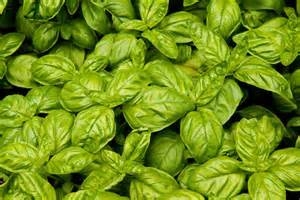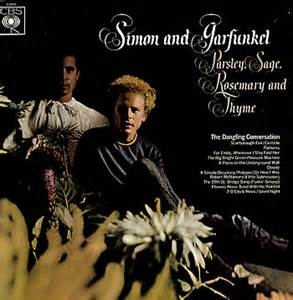By T. Eric Nightingale, UC Master Gardener of Napa County
One of my favorite parts of home gardening is growing my own herbs. Fresh herbs add depth of flavor to food that dried herbs simply can't match, plus many documented health benefits. A single herb has more culinary applications than a single vegetable and needs little space to produce all you need. I tend to think of herbs as annuals, but there are many perennial herbs as well.
Spring is an excellent time to plant herbs. Nurseries sell the most popular herbs as seedlings, but many are easy to grow from seed. When choosing a plant, be sure to know how much space it will need when mature. Some herbs, such as rosemary and mint, grow large in a relatively short time, often engulfing nearby plants. Put these herbs in their own pot where they can conquer their domain unchallenged. Alternatively, you can plant two vigorous growers in a single container and watch the battle royal play out over the summer.
We're all familiar with parsley, sage, rosemary and dill. But there are many less-common herbs you can grow to add some new flavor to your life.
One favorite of mine is Stevia rebaudiana. You are likely familiar with the sugar substitute Stevia, a refined version of this plant. The leaves alone are quite sweet and can be added to drinks and desserts to contribute sugar-free sweetness, an especially nice treat for any diabetics in your family. S. Rebaudiana is native to South America and adapted to environments more humid than Napa Valley. I've grown it successfully by keeping it well-watered and providing shade in the late afternoon.
Stevia is a perennial and will overwinter in Napa Valley. It does not like soggy soil so make sure the soil drains well and dries out between watering. The leaves can be eaten fresh or dried for future use.
For a decorative and edible addition to your garden, try the annual Perilla frutescens. Commonly known as shiso, it can be found in red and green varieties. The leaves are wide and attractive, somewhat resembling Coleus.
You may find shiso growing on roadsides and in vacant lots. It has become a weed in North America. It has been used in kitchens across Asia for centuries.
P. frutescens grows well in full sun and likes moist, well-draining soil. It has a mild flavor and can be used raw as a garnish. Shiso has recently experienced a boost in popularity in the United States, and one can find dozens of recipes using it.
Another interesting herb is the perennial Myrrhis odorata, also called myrrh or sweet cicely. This is not the myrrh of biblical history. Sweet cicely can reach six feet tall and has attractive leaves resembling those of a fern. The leaves have a licorice-like taste similar to anise.
In the past cicely was thought to relieve digestive problems; it was used medicinally for centuries. The plant works double-duty as the roots are also edible. Sweet cicely is accustomed to a cooler climate than Napa Valley, but it can be grown here if given afternoon shade and kept well-watered.
For a bit more zing, try Dysphania ambrosioides, an annual known in the Mexican kitchen as epazote. It is native to Central America. Epazote is a leafy green with a flavor often described as pungent. It can be an acquired taste, but you may find the effort worthwhile as epazote is said to reduce flatulence caused by eating beans and some vegetables. Napa Valley has a prime climate for this herb. It prefers heat and lots of sun, and it isn't picky about soil quality.
If your culinary options have been getting stale, I encourage you to explore the many alternative herbs out there. You are certain to find new flavors to reinvigorate your meals.
The UC Master Gardeners are volunteers who provide UC research-based information on home gardening and answer your questions. To find out more about upcoming programs or to ask a garden question, visit the Master Gardener website (http://napamg.ucanr.edu) or call (707) 253-4221 between 9 a.m. and noon on Mondays, Wednesdays or Fridays.

Many favorite herbs are perennial plants. I don't recommend growing these perennials in beds with annual vegetables, because the herbs need to stay in place for several seasons. Among the most common woody perennial herbs are rosemary, marjoram, oregano, sage and thyme. Plant them in a sunny location and don't over water. Trim them regularly to keep them shapely and you can enjoy them for several years. Rosemary plants can become quite large, so give them space or prune them vigorously from time to time.
Some herbs are invasive if not contained. Grow peppermint, spearmint, lemon balm and other mints in containers or in a part of your yard where they won't overtake other plants. These herbs thrive in partial shade in Napa Valley, and they like more water than the woody herbs. I have a happy patch of peppermint growing in a bed surrounded by a stone patio. It serves as a ground cover under a small citrus tree, and the water needs of both seem compatible.
One of my favorite garden herbs is French tarragon, but I learned the hard way that I shouldn't grow it in the vegetable patch. This plant dies back to its roots during cold weather. If grown in a spot that is undisturbed, it re-sprouts in the spring. I had a vigorous tarragon plant in the middle of a vegetable bed one summer. The next spring, before the tarragon sprouted, I cleared the bed of weeds and roots, accidentally including the dormant tarragon. My new tarragon planting is in a mostly ornamental bed close to the house. In the fall, I will mark its spot with a stake so that I don't uproot the plant by mistake.
In contrast, annual and biennial herbs make good neighbors for summer vegetables. Let's look at four of the common ones.
Basil is the queen of herbs in my summer garden. Traditional Italian types are essential for pesto, but there are dozens of other basils to try with different leaf color, leaf size and aroma. I like the purple varieties for their color, and I am also fond of lemon basil for a different but delicious pesto. Basils are frost sensitive, so plant them in late spring after the frost season ends. You can start basil easily from seed, or buy plants from the nursery. Remove flower spikes when they form, and the plants will produce leaves until cold weather kills them. If you have all the basil you need for cooking, you can let some of the plants bloom. The purple varieties, in particular, have pretty flowers.
Parsley is my old reliable. A biennial plant, it will go to seed during the winter, or sometimes at the end of summer. So I set out plants a couple of times during the year to have a fresh supply. There are two main types, curly-leafand flat-leaf, and both grow readily in ordinary garden soil.
You can start parsley from seed, but the seeds take a couple of weeks to sprout. If you don't have time for seed starting, buy a nursery six-pack, which produces plenty of parsley for family use. In my country garden, gophers are a problem, and they seem to like parsley roots. I plant parsley all around the vegetable patch, hoping that if gophers get one spot, they will miss the others and I will not lose my entire parsley crop.
Cilantro is a fast-growing herb essential to Mexican cuisine. It is easy to grow, but it does present one main problem. It grows so quickly from seed to bloom that you must plant it frequently to have a steady supply for the kitchen. It prefers cool weather, so in summer it will do better in a shady spot. Plants don't need much room, so try growing cilantro in the shade of larger summer plants such as tomatoes or pole beans. You can buy seedlings, but if you are a serious cilantro user, buy seeds and sow a few every couple of weeks.
Dill is another annual herb that merits more than one planting, particularly if you want to have dill for pickling in late summer. In my garden, I let some plants go to seed each summer. In April, the seeds will sprout and provide the first fresh leaves of the season. By June, this early dill will be sending up flower heads, so I plant a second crop toward the end of May. This system extends the harvest season and assures that I will have partially ripe heads for pickling when my cucumbers mature.
In summary, annual and biennial herbs can share the beds with vegetables, while perennial herbs need their own space. If you have no garden at all, consider containers. Many herbs do well in pots. Whether you choose to grow one or two or a few types, your summer meals will be much more flavorful.
Workshops: Napa County Master Gardeners will host a workshop on “Good Garden Resources in Print & Tech” on Saturday, July 11, from 9:30 a.m. to 11:30 a.m., at the University of California Cooperative Extension office, 1710 Soscol Avenue, Napa. Who do you trust for dependable gardening information? Where do you look for answers to your horticulture questions? Participants are invited to bring tablets or laptops. Master Gardeners will help you evaluate sources of gardening information, both online and in print.Online registration (credit card only);
Mail-in registration (cash or check only).
Napa County Master Gardener will also host a workshop on “Dealing with Drought and Drought-Tolerant Plants” on Saturday, July 11, from 10 a.m. to noon, at Mid-City Nursery, 3635 Broadway, American Canyon. Learn what to do now to help your garden survive on very little water. We will discuss what kinds of plants do best with minimal water. Learn about easy-care, long-flowering, colorful plants for your garden and ones that will attract pollinators. We will also discuss fire-wise plants and gardens. Online registration; Mail-in registration.
Master Gardeners are volunteers who help the University of California reach the gardening public with home gardening information. Napa County Master Gardeners ( http://ucanr.org/ucmgnapa/) are available to answer gardening questions in person or by phone, Monday, Wednesday and Friday, 9 a.m. to Noon, at the U. C. Cooperative Extension office, 1710 Soscol Avenue, Suite 4, Napa, 707-253-4143, or from outside City of Napa toll-free at 877-279-3065. Or e-mail your garden questions by following the guidelines on our web site. Click on Napa, then on Have Garden Questions? Find us on Facebook under UC Master Gardeners of Napa County.


